As of February 2024, healthcare organizations have anted up over $137 million in penalties for violating the HIPAA regulations. I bet they’d readily invest this money in protecting patients’ data and enhancing products.
When we originally posted this blog, the figure was a “mere” $13 million in HIPAA penalties. This sharp rise highlights the ongoing relevance and urgency of HIPAA compliance within the healthcare industry. It underlines why we can’t stress enough the need for investing in robust data protection and developing secure, HIPAA-compliant apps.
Given the rising penalties for violations, ensuring mobile app HIPAA compliance should be seen as a vital investment in both patient trust and long-term business success.
If you’re on board, let’s dive into the secrets of developing a HIPAA-compliant app. I suggest we err on the side of caution and make sure you follow HIPAA best practices from the get-go to avoid surprises during your medical app launch.
Table of Contents
- What is HIPAA and Why is It Important?
- What Does HIPAA Compliance Mean for Healthcare App Developers?
- What HIPAA Means for Patients and Hospitals
- PHI as per HIPAA
- Health App Use Scenarios & HIPAA
- HIPAA Checklist for mHealth App Developers
- 5 Steps to Make an App HIPAA-Compliant
- Features of HIPAA-Compliant Software
- HIPAA & COVID-19
- OCR Tools for HIPAA Compliance
- How Much Does it Cost to Build a HIPAA-Compliant App?
- How Much Does HIPAA Ignorance Cost?
- Our Experience in HIPAA-Compliant App Development
What is HIPAA and Why is It Important?
Let’s recap what HIPAA is, why you need it, when you need it, and what terminology you may need to impress your boss when discussing HIPAA compliance.

HIPAA basics
HIPAA — Health Insurance Portability and Accountability Act — is a set of rules (a public law, really) introduced in 1996 and last updated in 2013. Can you believe that? Yes, the main law governing your healthcare app’s security requirements hasn’t changed for over 7 years.
Well, yes – there was the intro of the Omnibus Rule in 2015, but the most recent happenings are just the determination to update the HIPAA Privacy Rule in 2023.
The good news is you won’t have to read 100 something pages worth of legislation trying to define technical parameters for privacy and security in healthcare applications.
The HIPAA act consists of:
- Privacy Rule
- Security Rule
- Enforcement Rule
- Omnibus Rule, and
- Breach Notification Rule
I won’t bother you to death with what each rule implies, but together they describe what a health app needs to have to be considered secure. Plus, the rules set forth procedures that covered entities need to adopt for keeping patient data safe.
OCR — Office for Civil Rights in the U.S. Department of Health and Human Services (HHS) — are the people who come knocking on your door if they get a claim about HIPAA issues with your app. They also have plenty of medical information on the HIPAA subject if you feel like it’s wiki-time.

Phraseology to discuss HIPAA with CEOs
As soon as you ask, “Does every health app need to be HIPAA-compliant?” you’ll find yourself juggling these few terms you need to know to discuss HIPAA app development seriously.
PHI — protected health information — comes as part of the answer to your question in that HIPAA is applicable whenever a health app handles individually identifiable health information:
- the patient’s physical or mental health or condition
- the fact of the provision of health care to an individual
- the payment details for the provision of healthcare to an individual
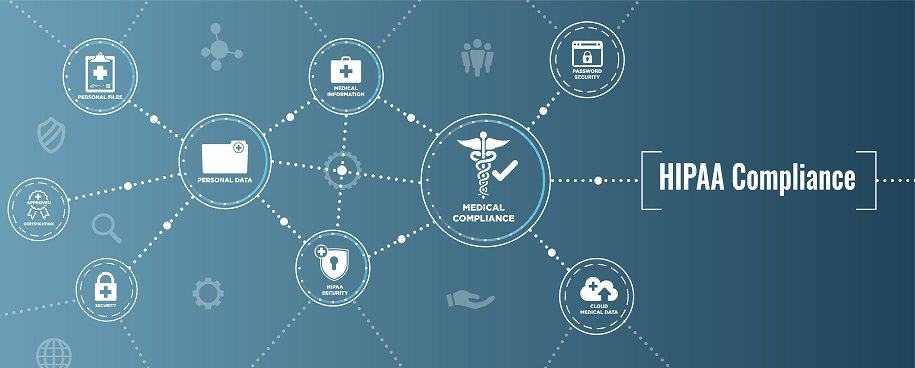
Covered entities are clinics, private practices, individual providers, healthcare plans, clearinghouses, and insurers, all of whom need to comply with the HIPAA requirements.
Business Associate is a person or organization that deals with individually identifiable health information on behalf of a covered entity. In our context, it may be a healthcare app developer or a cloud service provider who processes your patients’ data. They need to sign a business associate agreement before working with medical data.
Navigating HIPAA compliance application development is a multifaceted journey. It’s not just about creating a useful healthcare app, but also ensuring that the way you collect, store, and process PHI adheres to the stringent standards set by HIPAA rules.
What Does HIPAA Compliance Mean for Healthcare App Developers?
The HIPAA regulations broadly describe three types of data security safeguards:
- Physical
- Administrative
- Technical
As a healthcare app developer, our team most often deals with technical data safeguards. However, you, as a covered entity or business associate, also need to take into account physical and administrative data safeguards when developing a HIPAA-compliant app. Let’s quickly scan through each, shall we?

Technical data safeguards
Technical data safeguards include things like encryption, secure connections and protocols, and all other technology-related security best practices applicable to health apps.
Physical data safeguards
What’s usually implied here is limiting physical access to servers and other equipment that may contain PHI or enable sensitive data sharing. Besides, you need to have an adequate firewall and antivirus software deployed for adequate physical safeguards protecting your healthcare software.
Administrative data safeguards
Finally, administrative data safeguards cover personnel training and management, maintenance of privacy policies and procedures, privacy practices notices, etc.
Qualified HIPAA app developers will help you with the physical and technical safeguards, and the administrative safeguards will mostly depend on you. However, when you aim to build a HIPAA compliant web application, the expertise of a team specializing in healthcare software development becomes crucial. They understand the intricate demands of HIPAA and can guide you through the process, ensuring your application not only meets regulatory standards but also delivers value to its users.
Related: Comprehensive Guide to Medical Billing Automation
What HIPAA Means for Patients and Hospitals
Patients obviously get some benefits from implemented HIPAA policies, besides the fact that their sensitive data remains protected. What are these advantages?
HIPAA for patients
1. Being in control of who gets access to data
Patients have to sign a consent form before their info can be accessed and shared between licensed medical workers.
2. Availability of personal health data on demand
Patients can request all their data from a medical organization, and the software compliant with HIPAA requirements will need to export all this data and deliver it to them.
3. Ability to add corrections and instant sharing
Patients can ask healthcare personnel to update their records and share them with other providers. According to HIPAA, such medical data should be instantly shared via digital means.
HIPAA for hospitals
1. Keep patient data safe
2. Store data in an industry-recognizable standard
3. Get consent from patients for data sharing
Also Read: Hospital Management Software Development
PHI as per HIPAA
Let’s discuss what information your software should protect according to HIPAA rules. Broadly speaking, any individually identifiable health information stored or transferred by covered entities or business associates falls into this category. Therefore, the software may include the following:
Patients’ Physical or Mental Health Conditions
- description of the provision of health care to an individual
- any lab results, imagery, or similar artifacts
Demographic Information
- name, address, birth date, social security number
- admission date, discharge date, date of death
- photos and biometric identifiers
- phone/fax/email/IP address, etc.
Payment Data
- credit cards, account numbers
- health plan info
- medical record numbers
When you write HIPAA compliant applications, it’s crucial to implement stringent measures that prevent unauthorized access, thereby ensuring the confidentiality of all this sensitive information.
At the same time, some bits of this information can be still available without HIPAA protection, but only when no directly tied to an individual. For example, some data can be anonymized and made available for medical research.
Secure Storage Solutions for Healthcare Data
Securing patient information is a fundamental responsibility for any organization handling healthcare data. With the rising complexities of healthcare operations and the increasing risk of data breaches, implementing robust secure storage solutions is essential to protect medical information while maintaining compliance with HIPAA.
The Importance of Secure Storage for Protecting Medical Information
Storing patient data securely is more than just a technical requirement—it’s about safeguarding patient trust and avoiding costly compliance violations. Failure to access sensitive data responsibly can lead to reputational damage and legal consequences. Organizations should focus on:
- Establishing layered security protocols to prevent unauthorized access.
- Utilizing HIPAA-compliant cloud solutions for secure storage of sensitive patient records.
- Regularly reviewing and updating storage policies to adapt to evolving cybersecurity threats.
With the healthcare industry increasingly relying on digital platforms, ensuring medical information remains secure should be at the forefront of every data strategy.
Best Practices for Database Management in Healthcare Systems
Effective database management is crucial in maintaining the security and integrity of patient data within healthcare systems. Key strategies include:
- Implementing access controls to ensure only authorized personnel can interact with the database.
- Conducting routine audits to detect any irregularities or unauthorized access attempts.
- Utilizing redundancy protocols to prevent data loss during system failures.
A well-maintained database not only ensures compliance but also supports smoother healthcare operations.
Choosing the Right Infrastructure to Store Healthcare Data Securely
Selecting an appropriate infrastructure is vital for ensuring that healthcare data is stored securely. Organizations should consider:
- Cloud solutions offering HIPAA-compliant features with built-in encryption and access controls.
- On-premises solutions for organizations requiring direct control over hardware and software.
- Hybrid models that combine both approaches for flexibility and scalability.
The right infrastructure should align with operational needs while meeting regulatory requirements.
Ensuring Data Integrity and Confidentiality Through Secure Storage Solutions
Maintaining data integrity ensures that patient information remains accurate and unaltered throughout its lifecycle. Confidentiality, on the other hand, focuses on preventing unauthorized access to confidential information. To achieve both:
- Use blockchain technologies to prevent unauthorized data modifications.
- Implement version control systems for tracking changes.
- Regularly back up data to prevent loss due to technical failures or cyberattacks.
Investing in technologies that guarantee data integrity enhances overall trust in your healthcare services.
Implementing Encryption for Private Information During Storage and Transfer
To protect private information during storage and transmission, implementing robust encryption protocols is non-negotiable. Best practices include:
- Using AES-256 encryption for data at rest and SSL/TLS protocols for data in transit.
- Ensuring encryption keys are managed securely and regularly updated.
- Verifying that all third-party services handling patient data also adhere to strict encryption standards.
Proper encryption practices mitigate risks associated with data breaches and unauthorized disclosures.
Conducting Risk Assessments to Identify Vulnerabilities in Storage Systems
Regular risk assessments help uncover potential vulnerabilities within your storage solutions. Key steps involve:
- Mapping all data flows to identify weak points.
- Testing for common threats such as SQL injections or phishing attempts targeting storage access.
- Documenting identified risks and developing mitigation strategies.
By proactively performing risk assessments, healthcare organizations can stay ahead of potential breaches.
Developing an Incident Response Plan for Potential Breaches of Confidential Information
Even with the best defenses, breaches can occur. Developing a comprehensive incident response plan ensures swift action to minimize harm. Consider including:
- A predefined communication plan to notify affected patients and regulatory bodies promptly.
- Steps for isolating compromised systems to prevent further data exposure.
- Post-incident analysis to improve future incident response strategies.
An effective plan not only ensures regulatory compliance but also strengthens patient confidence in how you handle confidential information breaches.
For those building apps in the health and wellness space, secure data storage and compliance are just the beginning. Dive deeper into health and wellness app development to explore how to create secure, user-centric apps that meet HIPAA standards and thrive in a competitive market.
Health App Use Scenarios & HIPAA
You might be still wondering about two aspects of HIPAA:
- Does HIPAA apply to health data that patients add and manage in mhealth apps on their own?
- Is there a case when an app developer doesn’t need to comply with the HIPAA rules?

Here are a few scenarios that will help you answer these questions and adjust your HIPAA mobile app development process.
Scenario #1
A user downloads the app from the App Store and populates it with her glucose data from a personal glucometer.
HIPAA compliance: not required as no PHI is created, received, maintained, or transmitted on behalf of a covered entity or business associate.
Scenario #2
A patient exports the details of his disease from his clinic’s EHR and imports this data into an m-health app to manage it there.
HIPAA compliance: not required because no covered entity is involved in this mobile development case.
Scenario #3
Following her doctor’s advice, a patient downloads an app from the App Store to manage her weight and calorie intake and send reports from the app to her doctor.
HIPAA compliance: not required because no electronic protected health information (PHI) is transmitted.
Scenario #4
A patient gets an app to manage his chronic condition from the App Store. He then sets up the app to share his health data with his clinic’s EHR (the app does not belong to the clinic but has an interoperability arrangement to securely share patient data with it).
HIPAA compliance: not required as the app does not handle PHI data on behalf of a covered entity or business associate.
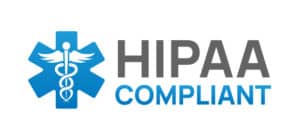
Scenario #5
A patient downloads a clinic’s remote patient monitoring app from the App Store. All health data that the patient enters automatically syncs with the clinic’s EHR system.
HIPAA compliance: required.
Scenario #6
A patient gets her health plan’s app from the App Store to manage her claims and health plan records.
HIPAA compliance: required.
Building a HIPAA compliance app becomes especially critical when dealing with health-related scenarios where sensitive patient data is being transferred to or from covered entities or business associates. As you can see, the key to understanding HIPAA compliance requirements is to double-check whether:
- your app developer creates, receives, maintains, or transmits PHI on your behalf
- your patients works with a random health app or specifically with your application
- your patients have full control over sending their health data outside the app
HIPAA Checklist for mHealth App Developers
What’s interesting about the Health Insurance Portability and Accountability Act is that on its 114 pages, you won’t find a list of best practices or recommendations for using, e.g., specific methods of encrypting patient health data. Still, HIPAA for app developers should obviously bear a lot of implications.
Related: How to Make Make a Medical App
Like I mentioned, the law has been sitting without changes since 2013. How do you think it manages to stay relevant for so long? That’s right, by being as general as possible. Here’s a good example:
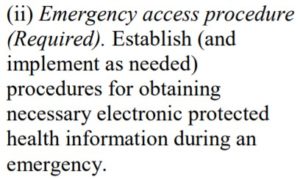
That’s all they say about that in HIPAA. Does it make your life easier and explain how to make a HIPAA-compliant app? I bet it raises a lot of questions, like, “What do we regard as an emergency?”, “What emergency access procedures should we set up?”, “Do I need to allow some kind of backdoor to the app for authorized personnel?”, “How is it different from authorized users accessing patient information during non-emergencies?”.
Understanding and abiding by the HIPAA law is a fundamental requirement when you aim to create a HIPAA compliant web app, ensuring you provide the safest environment for users’ sensitive health information. To give you some practical advice, let’s summarize the most action-packed directions from HIPAA that you should apply during the health app development process.
Limit information access in the app
The first security rule of thumb is to check who can access PHI. Make sure that only authorized users (and third-party HIPAA-compliant software) have access control over the app’s data:
- Bio authentication
- 2-factor authentication
- Automatic log-off when the user is inactive
It also helps to have distinct user roles with specific access rights to different app features. For instance, not everybody on the provider’s side might need access to consumer health information all the time.
Encrypt all patient data
Again, HIPAA doesn’t recommend any particular encryption and decryption standards, but we prefer to use open-source, well-recommended AES 256-bit encryption, OpenPGP, and S/MIME.
To remain compliant with HIPAA, all PHI-related data must be encrypted at rest and in sync. Such data encryption guarantees data transmission security during data transfer and prevents hacks.
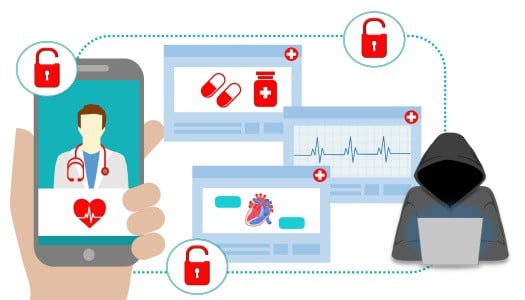
Implement an audit mechanism
You should be able to track down who exactly is using the app and what actions these users are taking. In essence, such audit controls call for unique user identification.
Ensure data integrity
PHI should be unavailable for unauthorized changes. Blockchain technology is really priceless when it comes to preserving patients’ data integrity. Consider moving EHR (electronic health records) or EMR (electronic medical records) to a blockchain to develop a HIPAA-compliant app that’s incredibly resistant to hacks.
You May Also be Interested: How to Make a Blockchain Application
Transfer PHI using secure connections and protocols
To make patient data resistant to breaches, apart from merely encrypting it, you also need to send it using a secure https connection and SSL/TLS. If anything, just check that your HIPAA-compliant app developers will use these technologies when building a HIPAA-compliant mobile app.
Limit the amount of data to the necessary minimum
Ensure that you are only gathering the information that will impact your app’s performance and make it more useful for your patients. We also recommend that you avoid caching PHI and storing users’ geolocation data (other than state-level).
Also Read: How to create an on-demand pediatric app
Remove PHI from notifications and emails
Note that PHI may be easily compromised when transferred via push notifications and emails on mobile devices. The same goes for text messages and virtually any outside-the-app messaging.
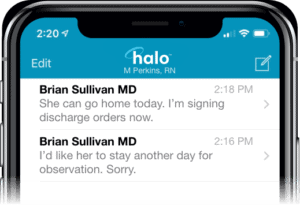
Have options for patient data backup and removal
HIPAA is also very particular about storing individually identifiable health information. If you store data in the cloud (e.g., Google Cloud or AWS), you absolutely have to back it up.
At the same time, to create a HIPAA-compliant app adhering to all standards, you should allow patients to wipe their personal information entirely from the system, including remote removal of PHI data (e.g., health plans) from a lost mobile device.
Enact privacy policy
This should probably be the first on the list. Still, please remember that your customers will appreciate a transparent privacy policy that explains how you treat their health data and manage access controls.
The privacy policy also goes hand in hand with establishing a long-term strategy for monitoring all HIPAA-related aspects of your health app.
5 Steps to Make an App HIPAA-Compliant
Now it’s time to get down to the nitty-gritty of enabling HIPAA compliance in your healthcare application whether you’re building a chatbot or a doctor’s appointment app. When building a HIPAA compliant app, it’s essential to involve healthcare professionals in the process, as their insights can help ensure the application meets both regulatory and practical needs in a healthcare setting.
Let’s review all necessary steps, and if you feel like something is missing, never hesitate to reach out and ask. Here’s how to make a custom developed app HIPAA-compliant.
Here’s the list of all steps at a glance:
- Step 1. Choose and implement HIPAA-as-a-service backend
- Step 2. Separate PHI from other app data
- Step 3. Encrypt throughout
- Step 4. Run audit and penetration tests
- Step 5. Implement long-term strategy with logging

Step 1. Choose and implement HIPAA-as-a-service backend
As you know, these days, apps don’t exist in a vacuum, and there’s always some web app they connect to. Of course, healthcare apps are not an exception, and cloud services they connect to need to be HIPAA-compliant as well.
Fortunately, there’s plenty to choose from: Every major cloud provider offers a backend that includes HIPAA compliance out-of-the-box. Some of the most reliable players that come to mind include:
- Truevault
- AWS
- Google Compute Engine
- Aptible
- Datica
Step 2. Separate PHI from other app data
It’s recommended that you keep all patients’ health data in a separate database when building a HIPAA-compliant application. That way, you won’t have to constantly encrypt and decrypt every byte of the app, which may sometimes slow down its performance.
Step 3. Encrypt throughout
We already mentioned that, but you should know that encryption has to become an integral part of your health app. Data should be encrypted while at rest (locally on smartphones and in the cloud) and in transit, as it travels between apps and servers.
That’s also the step where you go through all the items listed in the checklist above.
Step 4. Run audit and penetration tests
It’s a good practice to hire out testing to an external company that can audit your app developers’ work by running all sorts of tests.
Related: How to implement a DevOps plan
Step 5. Implement long-term strategy with logging
Finally, you’ll need to set up procedures for continuous monitoring of HIPAA issues because your app will keep evolving, and so should its security. You’ll need to track PHI access, detect security issues, regularly reevaluate the effectiveness of security measures, and assess potential risks to compromising e-PHI.

Overall, these 5 steps cover how you make an app HIPAA compliant.
Also Read: How to build a healthcare chatbot
Features of HIPAA-Compliant Software
To build HIPAA compliant apps, it’s crucial to prioritize data protection measures that safeguard user data from breaches and misuse. But what are the common properties often found in healthcare software that’s optimized for HIPAA? Let’s delve into these key features:
Encryption
All PHI data should be fully encrypted using the industry’s best practices. This applies whether the data is at rest (stored on cloud or local servers) or in transit (when syncing between applications). It’s not enough to just encrypt; the encryption standards used should be top-notch and up-to-date with industry norms.
Shareable Data Format
Patient data must comply with HL7/FHIR data standards. This compliance ensures streamlined sharing of patient info between providers, enhancing collaboration and improving patient outcomes. An app that meets these standards is an asset in today’s interconnected healthcare landscape.
Diving into the world of healthcare technology, our latest blog post sheds light on the intricacies and advantages of SMART on FHIR app development, guiding you through each step to ensure your project’s success.
Emergency Access
HIPAA-compliant applications must include an option for emergency access. This feature activates in a crisis, allowing providers to lock or export patient data quickly. It’s a vital component of any healthcare app, providing a safety net for unforeseen circumstances.
Authentication Mechanisms
The software also needs to include proper authorization mechanisms. These mechanisms prevent any party not registered in the system from accessing PHI. A robust user authentication system is the first line of defense against unauthorized data access.
Data Anonymization
Last but not least, a health app developed in line with HIPAA rules makes it easy to strip PHI and make obfuscated medical data available for research, clinical trials, and other similar purposes. This functionality is a game-changer in the world of medical research, as it allows for comprehensive data analysis without compromising patient privacy.
Effective Security Practices for Mobile Health Apps
Developing a HIPAA-compliant mobile health app isn’t just about checking off regulatory boxes—it’s about embedding strong security measures into every facet of your app’s lifecycle to protect healthcare data. Implementing the following best practices ensures your app secure functioning, trusted by users and stakeholders alike.
Implementing Strong Security Measures to Protect Healthcare Data
Your mobile health app must employ strong security protocols to prevent data breaches and HIPAA violations. This includes implementing firewalls, intrusion detection systems, and secure code development practices. To support continuous protection, partner with experts specializing in healthcare application security. These activities safeguard both patient trust and operational integrity.
Regularly Updating and Testing the App to Ensure It Remains Secure
Regular maintenance isn’t just good housekeeping—it’s a compliance requirement. Conduct periodic vulnerability assessments and penetration tests to identify potential weaknesses. Continuous updates help counter evolving threats across the app’s network and infrastructure, ensuring it stays secure and in line with HIPAA standards.
Using Encryption to Safeguard Protected Health Information (PHI)
Encryption is your frontline defense in protecting personal health information. To encrypt data effectively, ensure both data at rest and in transit use robust standards like AES-256. Encryption helps mitigate risks during data exchanges between patients, providers, and backend systems—especially crucial for safeguarding sensitive data.
Restricting Access to Sensitive Data Through Robust Access Management Systems
Limiting who can access sensitive data is fundamental to maintaining HIPAA compliance. Implement access management systems with multi-factor authentication (MFA), role-based access controls (RBAC), and audit trails. These measures not only secure user permissions but also help prevent unauthorized activities that could compromise patient data.
Ensuring Compliance with Data Protection Laws and Privacy Laws
Beyond HIPAA, your app must adhere to applicable data protection laws and privacy laws like GDPR (for international users) or CCPA (for California residents). Compliance requires clear data usage policies, consent management tools, and secure handling of user information, ensuring that no regulations are overlooked in global healthcare operations.
Training Employees on Security Practices to Maintain Security
Even the best technology can be undermined by human error. Train your employees on security protocols to maintain security throughout development and post-launch phases. Regular workshops on handling PHI, recognizing phishing attempts, and adhering to internal security policies can significantly reduce the risk of compliance violations.
HIPAA & COVID-19
The Office for Civil Rights has relaxed the HIPAA requirements during the COVID-19 pandemic for all covered healthcare providers who are provisioning telehealth services to patients. This certainly simplifies HIPAA-compliant mobile app development to an extent.
The organization will not penalize a healthcare provider using non-HIPAA-compliant telemedicine tools for addressing their patients’ needs in good faith. However, health insurance companies are not covered and need to continue complying with all HIPAA regulations while providing insurance coverage.
Quick facts about HIPAA and COVID-19:
- No expiration date until a special statement is issued by OCR
- Covers Medicare, Medicaid, and all other patients
- Includes HIPAA Privacy, Security, and Breach Notification Rules
OCR Tools for HIPAA Compliance
OCR, in partnership with FTC, the HHS Office of National Coordinator for Health Information Technology (ONC), and the Food and Drug Administration (FDA), built a couple of online tools to help health app developers verify what laws and regulations may apply to their solutions.

Please check out these tools when in doubt about HIPAA application:
As you embark on the journey to make a HIPAA compliant app, these tools can serve as critical resources. They offer guidance and assistance every step of the way in navigating the complex landscape of regulations and requirements.
By leveraging these tools, not only will you be ensuring that your app is in line with HIPAA regulations, but you will also be taking an important step towards building trust with your users, who can rest assured knowing that their sensitive health information is protected and handled with utmost care.
How Much Does it Cost to Build a HIPAA-Compliant App?
It’s really hard to put a price tag on app development costs, but especially so when developing a HIPAA-compliant app from scratch as all mhealth apps have different scopes, and therefore HIPAA application development budgets vary accordingly. For example, we can build HIPAA-compliant apps ranging from $60,000 to $190,000. It’s critical to partner with an experienced HIPAA-compliant mobile app development company to keep the cost of implementing these requirements under control.
The healthcare industry-wide HIPAA compliance costs are close to $8.3 billion a year, with each physician spending around $35,000 per year for keeping health information technology secure.
Related (Other blogs about apps that require HIPAA Compliance):
- Women’s Health Tracking App Development
- How to Make a Hospital Management Software: A Complete Guide
- How to Build a Meditation App Like HeadSpace or Calm
- Remote Patient Monitoring App Development
- Healthcare App Design Guide
- EHR/EMR Development Guide
- Building a Mental Health Chatbot
We’ve discovered that it’s safer to err on the side of caution and implement HIPAA-related technologies even when we’re building an MVP that doesn’t use PHI. Eventually, HIPAA will become a requirement, and so it’s better when it’s built into the app’s architecture from the very beginning.

If you decide to go with an out-of-the-box HIPAA-as-a-Service option, the magic number will be around $2,000 per month. Hold on, there’s still good news! If you’re considering building a telehealth solution, that is. We’ve partnered with Agora.io to offer unprecedented 90% off pricing to cover your HIPAA compliance expenses on the telehealth front. You can learn more about this initiative here.
How Much Does HIPAA Ignorance Cost?
If you decide to build a HIPAA-compliant app ignoring some of the regulatory requirements, that may turn out a major blow to your budget. Building HIPAA compliant apps is not just a legal obligation, but it’s also a measure of credibility and trustworthiness in the healthcare industry. For exemplary purposes, we can discuss a couple of cases that demonstrate the likely expenses if you decide that it’s not worth it to make a mobile app HIPAA-compliant.
Related: App Development Costs: The Complete Breakdown
Aetna Life Insurance Company
The company had to settle for a $1,000,000 fine with OCR, following 3 data breaches, only one of which had to do with digital malpractice: they let Google and other search engines index health plan-related documents.
Related: Insurance App Development Guide
Metropolitan Community Health Services
The nonprofit health center serves over 3000 patients a year and has agreed to pay $20,000 for not complying with the HIPAA Security Rule. OCR took into consideration MCHS’s orientation towards the underserved population in rural North Carolina. Hence, the manageable (but still unpleasant) penalty.
The average fine for breaking HIPAA compliance rules and regulations during mobile app development HIPAA compliance in 2020 was around $940,000. In 2023, the average fine for violating HIPAA compliance rules and regulations during mobile app development soared to a little over $2,000,000, highlighting the growing seriousness of this issue in the healthcare industry.
The development of HIPAA compliant mobile apps must always prioritize patient data security to avoid costly penalties and reputational damage.
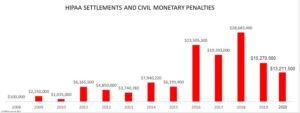
Our Experience in HIPAA-Compliant App Development
For Topflight, being a HIPAA compliant app development company, it’s probably easier to list the apps that didn’t require us to implement HIPAA because, for the 99% of healthcare applications we build, web and mobile app development and HIPAA compliance go side by side. Therefore, complying with the HIPAA rules is part of our daily routine.
So it’s only when we build fitness solutions like a mobile application Habitap or Walker Tracker that we don’t need to focus on HIPAA — simply because these apps need no health data to operate. Things like calories burned, steps taken, or distance covered do not comprise health data.
Some examples of HIPAA-compliant platforms we built include Medable and Smarter Symptom. Check out our portfolio for more of our work. Reach out whether you have questions about HIPAA-compliant video conferencing SDKs, how long it will take to build your app, or if you’re looking for help with strategy, design, and HIPAA-compliant app development.
Whether you’re a healthcare provider, business associate, or belong to covered entities, we’ll be happy to assist and help you make your app HIPAA compliant while working on your software development project.
Related Articles:
- A Guide to Development a Medical Website
- How to Start a Healthcare Startup
- Guide to Developing a Medical IoT Application
- Mental Health Application Development
- A Definitive Guide to Telemedicine Development
- Blockchain in Healthcare Application
- How to Create a Medication Reminder Application
- Guide to Building an On Demand Pediatrics Application
- Virtual Nurse App Development Guide
- The Best Patient Scheduling Softwares Untangled
[This blog was originally published on 11/4/2020, and has been updated for more recent data]
Frequently Asked Questions
Does a mental health application need to comply with HIPAA?
Yes. In addition, a patient’s written consent is required in case psychotherapy notes need to be shared.
Is HIPAA required only for telemedicine apps?
For all telemedicine and other healthcare software that handle PHI on behalf of covered entities or business associates.
What is the best tactic for speeding up HIPAA-compliant application development without sacrificing its HIPAA compliance?
Use one of the available HIPAA-as-a-Service solutions from well-known vendors like Google, AWS, or Microsoft. That will noticeably boost the HIPAA-compliant application development process.
Can I create a HIPAA-compliant app using only off-the-shelf solutions with minimal custom coding?
Yes. Reach out to ask what tools we can recommend.

